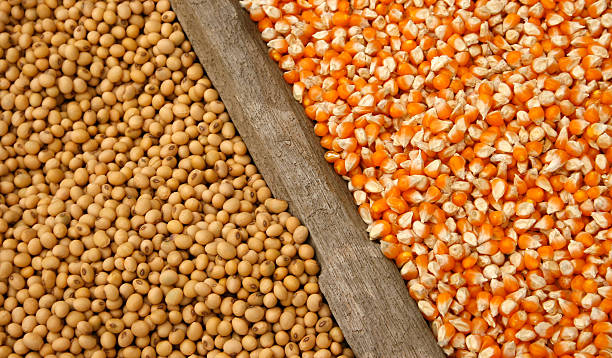Marketing plans are typically made up of two parts: pre-harvest marketing, in which producers market the crop prior to harvest, and post-harvest marketing, in which producers sell bushels during harvest or unmarketed bushels in storage after harvest. In this article, we discuss how historical pre-harvest price movements can be used as a guide for producers when creating their pre-harvest marketing plans. Figures 1 and 2 contain boxplots that show the distribution of historical percent changes in the harvest-time futures prices for soybeans (November contract) and corn (December contract) from December to each subsequent month using data which spans from 2009-2023. Boxplots are helpful as they allow us to analyze the seasonality of prices and the associated price volatility across the year. In the boxplots, the X represents the average November soybean contract price percent change from December to the corresponding month. The bottom whisker represents the lowest 25% of price changes, the box represents the next 50% of price changes, and the top whisker represents the highest 25% of price changes. The line separating the box represents the median; 50% of observations lie below, and 50% lie above. The black dots represent outliers, values at the extreme end of the data.
Figure 1 indicates that the highest average soybean price occurs in July, where the price is approximately 5% higher than in December; however, the median is approximately 0%, indicating that the price is only higher 50% of the time. On the contrary, the month of June has a slightly lower average price increase at 4%, but less downside risk. An interesting result for soybeans is the outliers in February and March, corresponding to the Brazilian soybean harvest window. We hypothesize that Brazilian crop or harvest issues can provide U.S. soybean producers with opportunities to market grain crops at abnormally high prices with respect to the December price.
Figure 2 indicates the summer months again provide the highest average corn price change, with June being the highest on average. We again find that with higher price potential comes more price variability. The May and June median price changes are near 0%, indicating equal upside and downside price risk. After June, the median becomes more negative, indicating that prices are likely to drop with expected new crop production. In May, the upside price potential ranges from 0% to 35%, while the downside ranges from 0% to -15%.
Figures 1 and 2 put price risk in perspective as it pertains to pre-harvest marketing plans. On average, prices are higher in the summer than in December; however, these higher prices carry a significant amount of downside risk. For example, if a producer is trying to decide if they should market corn in May. The boxplots would indicate that if the price is 15% greater than the December price, price movements have been greater than at least 75% of price movements historically. Creating a solid signal to lock in the higher price. These charts may also indicate the usefulness of option contracts, such as establishing a futures market price floor through purchasing a put option or building an option spread strategy. The summer months have wide trading ranges, by using an option producers can lock in a price floor but leave themselves open to upside potential.


Maples, William E., and Grant Gardener. “Using Historical Price Movements to Inform Marketing Decisions.” Southern Ag Today 3(51.1). December 18, 2023. Permalink


